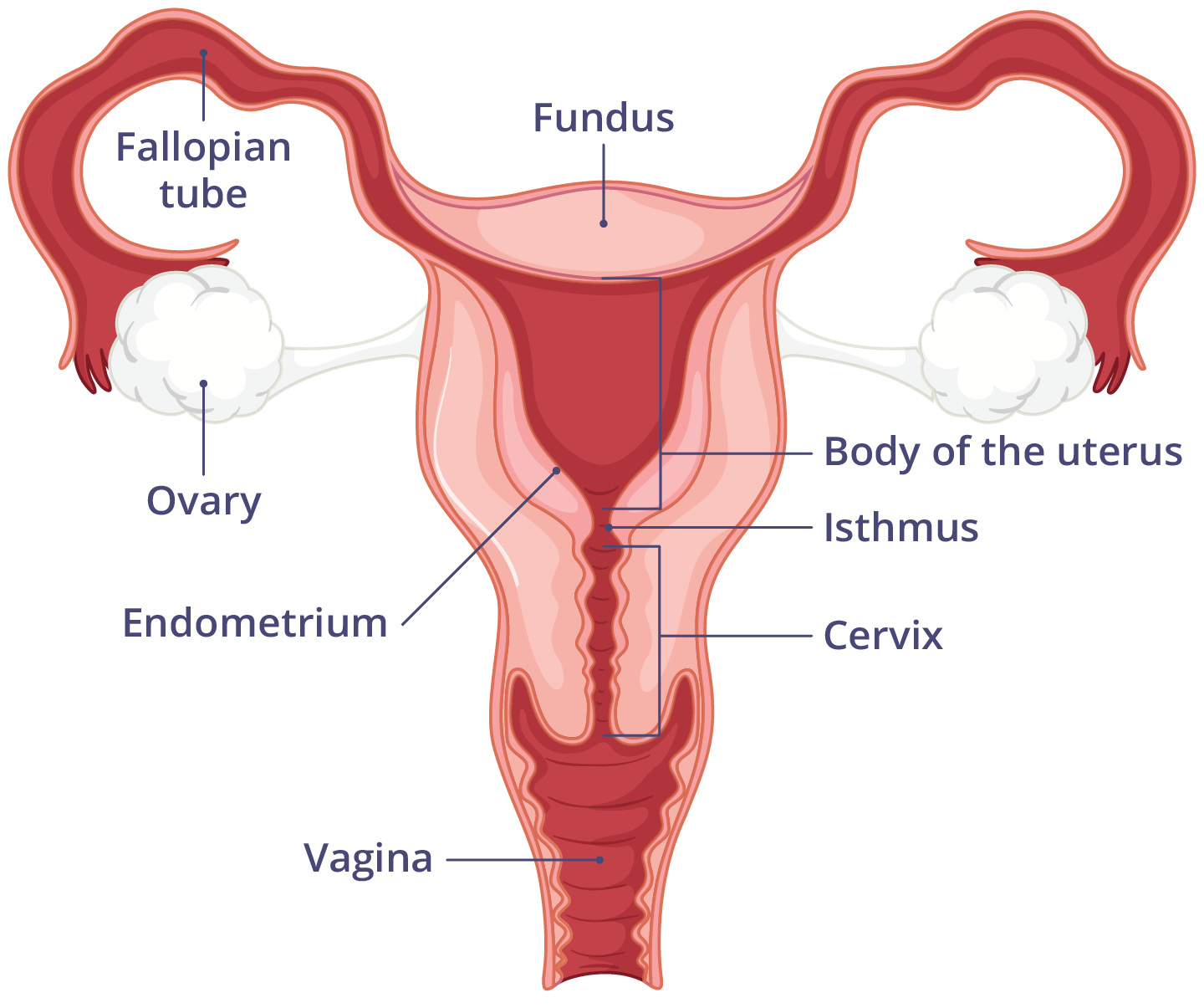Anatomy of pregnancy and birth - cervix
6-minute read
Key facts
- Your cervix is the muscular channel or opening that runs from your uterus (womb) to your vagina.
- From conception until just before birth, your cervix protects your growing baby by helping to keep them safe and secure in your uterus.
- Your cervix undergoes changes during labour in a process known as 'effacement' or 'ripening'.
- During labour your cervix dilates (opens) to 10cm so that your baby can be born.
What is the cervix?
Your cervix is the muscular channel that is part of the female reproductive system. It is an opening that runs between your uterus (also known as the womb) and your vagina.
Your cervix is found in your pelvis.

What does my cervix do?
Your cervix is a channel, referred to as the 'cervical canal' and has the following functions:
- When you menstruate, blood leaves your uterus through your cervix.
- It produces some of the moisture that lubricates your vagina.
- As you approach ovulation, it secretes stretchy and elastic mucus that helps sperm travel up to your fallopian tube to fertilise an egg.
- When you are not ovulating, your mucus changes to a thicker consistency. This makes it more difficult for sperm or germs to reach your uterus.
- During pregnancy it holds your baby in your uterus.
- During childbirth it widens to allow your baby to move down into your birth canal.
What does my cervix do during pregnancy?
Your cervix plays an important role during pregnancy. It protects your baby from the time you conceive until just before you give birth.
From the start of pregnancy, the mucus on the surface of your cervix becomes sticky and thick. This creates a mucus 'plug'. Your mucus plug stops microorganisms, such as bacteria and viruses, from entering your uterus and potentially harming your baby.
What problems can occur with my cervix during pregnancy?
During pregnancy, you can develop a complication known as a short cervix (cervical length less than 25mm ). Your doctor can diagnose a short cervix during a routine pregnancy ultrasound scan, usually between week 16 and 24.
The main problem with having a short cervical length is that it can increase your risk of premature labour and birth (having your baby before 37 weeks of pregnancy).
If you have a short cervical length during pregnancy, your doctor may recommend treatment to reduce your risk of preterm birth. They will also closely monitor your cervix during your pregnancy.
How does my cervix change during labour?
During labour your cervix changes from being long and firm to soft, thin and more elastic. It also starts to dilate (open). This is called 'effacement' or 'ripening'.
Changes to your cervix are partly triggered by contractions of your uterus. As your cervix begins to open, you may see a clear, pink, slightly bloody discharge or spotting (sometimes referred to as the 'show'). You may also notice the release of the mucus plug from your cervical canal.
The time it takes for your cervix to open (or dilate) during the first stage of labour will vary between people. You enter the second stage of labour when your cervix is fully open, about 10cm (known as 'fully dilated'). During this stage your baby moves through your pelvis and you push your baby out. The third stage of labour is when you deliver your placenta.


Inducing labour
Doctors sometimes recommend that labour is induced (started with medical treatment).
Treatment can be given to artificially ripen your cervix, to start your labour. This can be done in several ways.
Resources and support
- Learn about the stages of labour at The Royal Women's Hospital website.
- The Royal Australian and New Zealand College of Obstetricians and Gynaecologists have a helpful resource answering some common questions people have in pregnancy.
- Read about self-care for expecting and new parents at PANDA.
- Call Pregnancy, Birth and Baby to speak to a maternal child health nurse on 1800 882 436 or video call. Available from 7 am to midnight (AET), 7 days a week (including public holidays).
Do you prefer to read in languages other than English?
- The Multicultural Centre for Women's Health has a catalogue of health resources for females, available in more than 70 languages.
- Visit the Healthy Horizons website to find health information for people who were born outside Australia.
Looking for information for Aboriginal and/or Torres Strait Islander people?
- You can find out more about Aboriginal and/or Torres Strait Islander pregnancy health on Stronger Bubba Born or watch the How to Have a Safer Pregnancy video.
Looking for information for sexually and gender-diverse families?
- PANDA provides inclusive and appropriate support for LGBTIQA+ expecting and new parents.

Speak to a maternal child health nurse
Call Pregnancy, Birth and Baby to speak to a maternal child health nurse on 1800 882 436 or video call. Available 7am to midnight (AET), 7 days a week.
Learn more here about the development and quality assurance of healthdirect content.
Last reviewed: November 2024



